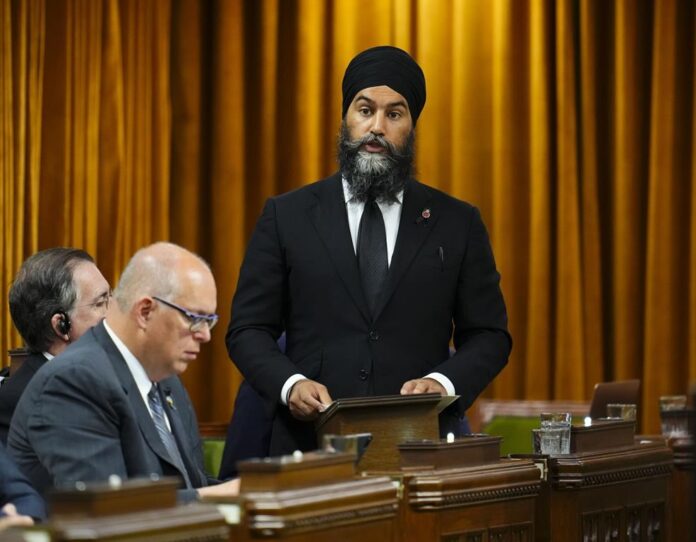NDP Leader Jagmeet Singh says his party was willing to be flexible on the first phase of the Liberal government’s dental-care plan, but in future the New Democrats will bend no further.
The government agreed to bring in a federal dental plan for uninsured low- and middle-income families as part of a supply and confidence agreement with the NDP.
In exchange for fulfilling its vision for dental care, among other priorities, the NDP agreed not to trigger an election before 2025.
The agreement stipulates that the government deliver dental care to children under age 12 who meet the criteria by the end of this year.
Singh acknowledged in an interview that the timeline was ambitious, which is why the NDP was amenable to an interim measure. “That flexibility allowed for the government to deliver that in a flexible way.”
Rather than launch a full-fledged program, the government opted to deliver cheques directly to qualifying families. The new benefit provides up to $650 for each eligible child, and is based on their family’s income.
To access the money, families with a household income of less than $90,000 need to attest that their child does not have access to private dental coverage, they will have out-of-pocked dental expenses they plan to use the money for, and they will be able to show receipts.
The government announced the benefit would be a “first stage,” while a more comprehensive program is developed.
Ford, Maritime premiers want more details on federal dental program but focus should be on health-care crisis – Aug 22, 2022
Singh said his party agreed to the benefit plan on condition the full program be ready for the next phase of qualifying patients by the end of next year.
The program is supposed to extend to all kids under 18, people with disabilities and seniors by the end of 2023, and apply to all members of qualifying families by 2025.
Trending Stories
In an about-face, Palace will allow Prince Harry to wear uniform at Queen’s vigil
Majority of Canadians want referendum on monarchy ties after queen’s death: poll
That’s not the only line in the sand the NDP has drawn.
“It’s got to be the full, federally administered program by 2023,” Singh said.
That means, as far as the NDP is concerned, the government can’t have the provinces deliver the dental-care program, as they did with child care.
The health minister’s office said in a statement that the government continues to work with partners, including provinces and territories, to improve access to dental care, and more details will come “in due course.”
The fact that the government is taking extra time to get the program right is good news, said Carlos Quinonez, vice-dean and director of dentistry at the Schulich School of Medicine & Dentistry at Western University.
“Best case scenario, for me, would be if there was a significant runway _ one, two, even three years _ to sort of think through all of the things that will need to be considered in order to achieve a likelihood of success for such a plan,” said Quinonez, who was consulted by the federal government.
For one thing, the government will need to carefully work out how to deliver dental care to uninsured people without disturbing what is “ostensibly, a relatively good system,” he said.
Another NDP condition is that the plan, once complete, include “the highest coverage possible” with services that will protect people’s quality of life.
“We want to make sure that quality of life is the top notch: best quality and the best practices,” Singh said, recognizing that some services would fall outside of that scope.
That balance can be difficult to find, though, Quinonez said.
“To me, that’s a very important issue because it not only has to be scientifically defensible, it also has to be ethically defensible.”
It’s difficult to make hard-set rules about how many cleanings someone is entitled to per year, for example, because people with greater oral health needs might need more care, he said. “These are exactly the reasons why I think it’s prudent to take some time and really think through what the implications of all of this are.”
Those questions are further complicated when one considers the way health and esthetics have become entwined in dentistry, said Catherine Carstairs, a professor in the department of history at the University of Guelph and author of The Smile Gap: a history of oral health and social inequality.
“I think it is hard in dentistry to distinguish between what’s a need and what’s seen to be cosmetic because there’s really quite a blending there.”
Carstairs said she was disappointed by the recently introduced benefit program, but still has high hopes for what the federal government can achieve in time.
“It’s not really going to go very far toward addressing the needs that people have,” she said. “But I’m still pleased to see that the program seems to be proceeding in some capacity.”
Legislation to enable the benefit payments is expected to be tabled in the House of Commons soon as MPs officially return from their summer break.
© 2022 The Canadian Press



